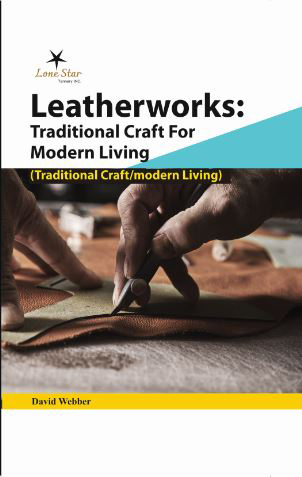
David Webber is a Leather Technologist at Technical Institute, Manitoba. He completed his Post-graduation in Accessory Design from Public University of Arts, Michigan. His work is focused on understanding leather, lacing and weaving, 3d printing leatherworking tools, stitching and computer control of leather. Over the past decade, Webber has been associated with many research and development projects in various public universities. He has also been an invited speaker at various international conferences.
"One of the oldest traditional industries is the leather industry. It contributes signi cantly to economic growth, balanced regional development, job creation, and overall poverty decline in the sector of leather and associated product manufacture. Leather, as one of the best materials, has been utilized in the manufacture of clothing and shoes since Paleolithic times. It is easy to mold and cut because it is light and sturdy, and most importantly, it breathes. It is now one of the most widely traded commodities on a global scale. Working with leather is a tidy, portable craft that requires little space and all of the tools and materials can be readily purchased - all you need is a small dining table! This book is the perfect introduction to working with leather. Chapter 1 presents an introduction to leather and hides. In this chapter, you will understand leather fabric. A focus on tanning leather and hides is given. You will also know how leather is produced. Chapter 2 focuses on lacing and weaving. Leather lacing is essentially a way to hand sew very thick leather. Since leather comes in a variety thicknesses and material types, sometimes projects require a leather that is too thick for leather sewing machines, or too heavy to pierce with a standard leather needle. The weather can be joined by lacing. Chapter 3 focuses on folding and riveting. When doing leatherworking, it's common to run across patterns that involve folding or aps. This chapter will show you a couple of techniques use to get nice folds into leather! Chapter 4 focuses on introduction to leather panel. It deals with leather molding, 3d leather wall panels, and the bene ts of leather wall panels. The Leather Panel provides information on good practices in small-scale manufacturing as well as professional training and pollution control procedures in the leather, footwear and leather products industries. The leather sector in developing countries has expanded substantially in the recent decades. Chapter 5 sheds light on 3D printing leatherworking tools. Using 3D printing techniques to construct leatherworking tools is an obvious extension of the practice of adapting familiar materials and tools to use with leather. The idea of substituting plastic tools for steel may seem blasphemous to some traditionalists, but the convenience and adaptability of 3D printing o ers many advantages that make up for the reduced durability. Chapter 6 presents about stitching that deals with saddle stitch and cross stitch. Chapter 7 focuses on computer control of leather. It deals with prepare and design software to create bags and backpacks, leather patterns in di erent way, the leather texture using adobe illustrator, and the use of CAD software."

© Copyright 2021, Lone Star Tannery Inc. All Rights Reserved.